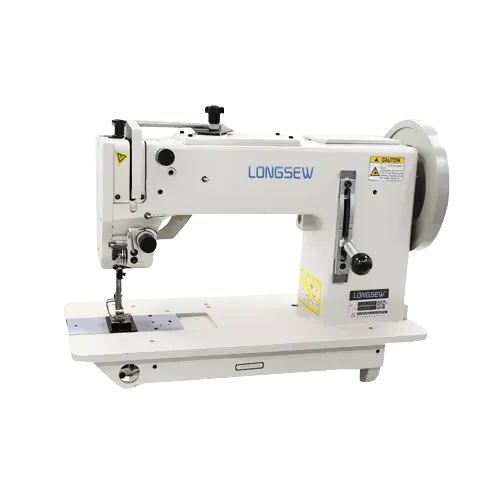what does an overlock stitch look like
Understanding the Overlock Stitch What Does It Look Like?
When it comes to sewing, the overlock stitch is an essential technique that has taken on a significant role in both home sewing and professional garment construction
. Familiarizing yourself with what an overlock stitch looks like can help you understand its functions and benefits, making it easier to choose the right sewing method for your projects.An overlock stitch, commonly produced by an overlock sewing machine, features a unique appearance characterized by its ability to sew multiple layers of fabric simultaneously while finishing the raw edges. The result is a clean, professional look that prevents fabric from fraying. The stitch itself typically consists of two or three threads, which are interlocked around the edges of the fabric. This not only secures the fibers but also allows for some stretch, making it ideal for knit fabrics and windows into the world of advanced sewing techniques.
The most notable visual characteristics of an overlock stitch are its smooth, rounded edges and its flatness. Under a magnifying glass, you can see how the stitch wraps around the fabric edge, forming a series of loops. These loops serve a dual purpose while they provide a safeguard against fraying, they also give the final product a neat and tailored appearance. Depending on the specific machine settings and threads used, the stitch can vary in width, thread tension, and overall design, producing results that can range from simple edge finishes to intricate decorative patterns.
what does an overlock stitch look like

For anyone involved in garment making, distinguishing between different types of stitches is vital. The overlock stitch, often mistaken for a zigzag stitch, is much more effective in preventing fraying and ensuring that seams remain durable over time. The zigzag stitch, while functional for some applications, doesn’t provide the same level of finish and structural integrity as an overlock stitch.
In practice, the overlock stitch can be utilized in a variety of sewing projects. For instance, when sewing a knit garment, the stretchability of the overlock stitch allows for greater movement, which is crucial for fitted designs. Additionally, when working with woven fabrics, it can ensure that the edges remain intact after multiple washes, a practical concern for everyday clothing.
To illustrate the benefits visually for those who may not be familiar, consider a simple t-shirt made from jersey fabric. The seams, finished with an overlock stitch, would appear smooth and professional, often featuring a decorative element along the stitching. This not only enhances the garment’s visual appeal but also contributes to its longevity.
In conclusion, understanding what an overlock stitch looks like is not merely an exercise in aesthetics; it is a vital aspect of garment construction. With its unique characteristics—smoothness, durability, and stretchability—it is a stitch that combines functionality with elegance. Whether you are a beginner embarking on your sewing journey or a seasoned seamstress looking to refine your techniques, mastering the overlock stitch will undoubtedly enrich your sewing repertoire and elevate the quality of your finished products.
-
Industrial Cylinder Arm Sewing Machine: Revolutionizing Heavy-Duty SewingNewsJul.28,2025
-
Cylinder Arm Sewing Machine: Perfect for Special Sewing ApplicationsNewsJul.28,2025
-
Cylinder Bed Sewing Machine: Essential for Sewing Complex MaterialsNewsJul.28,2025
-
Heavy Duty Sewing Machine: The Essential Tool for Industrial ApplicationsNewsJul.28,2025
-
Computerized Pattern Sewing Machine: Revolutionizing Precision StitchingNewsJul.28,2025
-
Heavy Duty Industrial Sewing Machine: Power Meets PrecisionNewsJul.28,2025
-
Leather Sewing Machine: The Industrial Standard for Tough MaterialsNewsJul.18,2025





























